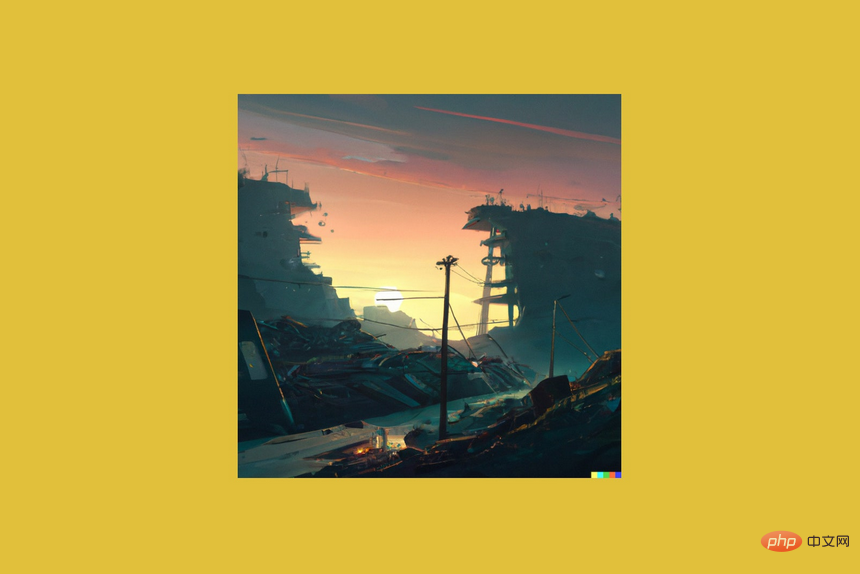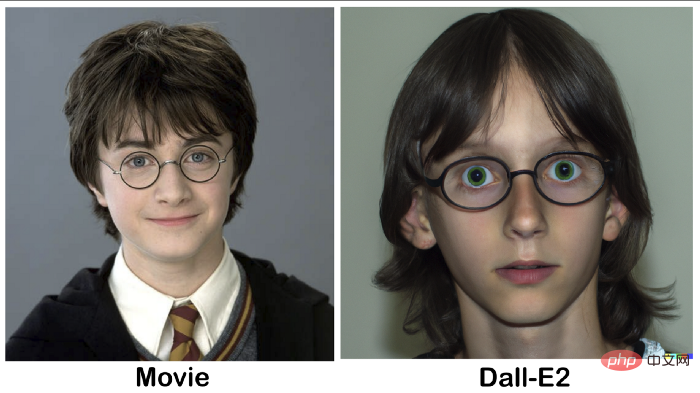 Technology peripherals
Technology peripherals
 AI
AI
 AI painting stirs up controversy again. Swedish artist calls artificial intelligence 'the most vicious technology'
AI painting stirs up controversy again. Swedish artist calls artificial intelligence 'the most vicious technology'
AI painting stirs up controversy again. Swedish artist calls artificial intelligence 'the most vicious technology'
Artificial intelligence painting stirs up controversy again, and is called "the most vicious technology" by the artist
Swedish artist Simon Stålenhag is known for his haunting paintings that combine natural landscapes with giant robots, A weird futuristic blend of industrial machines and alien creatures. And earlier this week, Stålenhag was outraged and disgusted when he discovered that an artificial intelligence system could generate paintings that mimicked his style.
This use of artificial intelligence technology to imitate Stålenhag's paintings was completed by Andres Guadamu, a lecturer in intellectual property law at the University of Sussex in the United Kingdom, who has been working on the legal issues surrounding artificial intelligence-generated works of art. . He used an app called Midjourney to create images similar to the style of Stålenhag's paintings and posted them to his Twitter account.
Guadamuz said the images were created to highlight the legal and ethical issues that can arise from artificial intelligence algorithms that generate art. Midjourney is just one of many AI programs capable of producing artwork based on textual prompts, using machine learning algorithms learned from millions of labeled images from the internet or public datasets. After training, they can draw almost any combination of objects and scenes, and can reproduce an artist's style with astonishing accuracy.

Guadamuz said he chose to paint in the style of Stålenhag for this experiment because the artist has criticized AI-generated art in the past and is skeptical of the technology. expressed objection. He said he did not intend to upset Stålenhag or expect him to respond. But he argued in a blog post that Stålenhag's lawsuit alleging infringement is unlikely to succeed because while the artwork may be protected by copyright, the artistic style is not.
Stålenhag doesn’t think the move is funny. In a series of tweets, he said, "While borrowing from other artists is a cornerstone of creating artistic culture, artificial intelligence is not, as it only goes to show that this kind of derivative work is what tech giants want in their visions of the future. Things that were shown to us."
Guadamuz publicly apologized to Stålenhag and deleted the tweet containing the derivative image. He also said he had received some dissatisfied and angry feedback on Twitter, including death threats, from people opposed to the move.
Stålenhag said in an email that he objected to Guadamuz’s use of an AI system to imitate his style but accepted his apology. The artist doesn't consider AI images that imitate his work to be plagiarism because they look novel, and he thinks tools like this might prove useful in exploring new artistic ideas.
He claimed that "artificial intelligence is the latest and most vicious of these new technologies, collating the works created by artists throughout their lives into data, often without their consent, and using this data as It is the core component of its technology combination, and generates works that are sold to the outside world for profit.”
There are more and more artificial intelligence “painters”, and legal proceedings may be inevitable
For decades, artificial intelligence Algorithms have always been used to generate art, but a new era of artificial intelligence art began in January 2021, when artificial intelligence developer OpenAI released DALL-E, a tool that uses machine learning technology to generate simple images from text descriptions program.
And in April this year, the company released DALL-E2, which can generate photos, illustrations and paintings that look like they were made by a human artist. In July this year, OpenAI announced that DALL-E would be available for anyone to use and said the images generated could be used for commercial purposes.
OpenAI has restricted users’ use of the service, primarily using keyword filters and tools that can identify certain images that may be considered offensive. Other companies have built similar tools, such as Midjourney used by Guadamuz to emulate Stålenhag-style paintings, and their rules for appropriate use may differ.

As the use of artificial intelligence art generators begins to expand, more and more artists are beginning to question their ability to imitate the work of human creators.
RJ Palmer is good at drawing fantasy creatures and served as a concept artist in the movie "Detective Pikachu". He said that curiosity drove him to try DALL-E2, and he was worried that this artificial intelligence tool would have a negative impact on his career. Later, he was struck by how users of the open-source image generator Stable Diffusion could generate different styles of art by adding artist names to text prompts. "It is despicable that these people are using AI-generated work to imitate the artist's style and inspiration," Palmer said.
Digital artist David Oreilly, who has been critical of DALL-E, said the idea of using these tools to create new works for profit is wrong. He said, "People who use AI-generated works do not own the reconstructed material, but are charged like Google Images."
Jonathan Løw, CEO of Danish photo platform Jumpstory, said he disagreed. How AI-generated images can be used commercially. He said, "I am interested in this technology, but also deeply concerned and skeptical." Hannah Wong, a spokesperson for OpenAI, said in a statement that the company's image production services are used by many artists Using the tool, the company solicited feedback from a number of artists during the development of the tool. She said, "Copyright law has adapted to new technologies in the past and will need to do the same for AI-generated content. We will continue to solicit the views and input of artists and look forward to working with them and policymakers to help protect creators rights.”
Although Guadamuz believes it will be difficult to prosecute the use of artificial intelligence technology to copy artists’ works, he expects more lawsuits to emerge in the future. “I’m sure there will be lawsuits of all kinds at some point,” he said. Like trademark infringement, copying works using artificial intelligence technology may be more legally risky.
There are also some legal experts who are not sure whether there is a legal basis for infringement of works generated by artificial intelligence. Bradford Newman, a partner at the law firm Baker McKenzie who specializes in artificial intelligence, said, "I may see some lawsuits from artists, and the reasons may include 'I did not give permission to train the algorithm on my artwork.' In this case, Who will prevail in the lawsuit will be an open question."
The above is the detailed content of AI painting stirs up controversy again. Swedish artist calls artificial intelligence 'the most vicious technology'. For more information, please follow other related articles on the PHP Chinese website!

Hot AI Tools

Undresser.AI Undress
AI-powered app for creating realistic nude photos

AI Clothes Remover
Online AI tool for removing clothes from photos.

Undress AI Tool
Undress images for free

Clothoff.io
AI clothes remover

Video Face Swap
Swap faces in any video effortlessly with our completely free AI face swap tool!

Hot Article

Hot Tools

Notepad++7.3.1
Easy-to-use and free code editor

SublimeText3 Chinese version
Chinese version, very easy to use

Zend Studio 13.0.1
Powerful PHP integrated development environment

Dreamweaver CS6
Visual web development tools

SublimeText3 Mac version
God-level code editing software (SublimeText3)

Hot Topics
 Bitcoin price today
Apr 28, 2025 pm 07:39 PM
Bitcoin price today
Apr 28, 2025 pm 07:39 PM
Bitcoin’s price fluctuations today are affected by many factors such as macroeconomics, policies, and market sentiment. Investors need to pay attention to technical and fundamental analysis to make informed decisions.
 Recommended reliable digital currency trading platforms. Top 10 digital currency exchanges in the world. 2025
Apr 28, 2025 pm 04:30 PM
Recommended reliable digital currency trading platforms. Top 10 digital currency exchanges in the world. 2025
Apr 28, 2025 pm 04:30 PM
Recommended reliable digital currency trading platforms: 1. OKX, 2. Binance, 3. Coinbase, 4. Kraken, 5. Huobi, 6. KuCoin, 7. Bitfinex, 8. Gemini, 9. Bitstamp, 10. Poloniex, these platforms are known for their security, user experience and diverse functions, suitable for users at different levels of digital currency transactions
 How much is Bitcoin worth
Apr 28, 2025 pm 07:42 PM
How much is Bitcoin worth
Apr 28, 2025 pm 07:42 PM
Bitcoin’s price ranges from $20,000 to $30,000. 1. Bitcoin’s price has fluctuated dramatically since 2009, reaching nearly $20,000 in 2017 and nearly $60,000 in 2021. 2. Prices are affected by factors such as market demand, supply, and macroeconomic environment. 3. Get real-time prices through exchanges, mobile apps and websites. 4. Bitcoin price is highly volatile, driven by market sentiment and external factors. 5. It has a certain relationship with traditional financial markets and is affected by global stock markets, the strength of the US dollar, etc. 6. The long-term trend is bullish, but risks need to be assessed with caution.
 Free coins trading market software recommendations The top ten easy-to-use coins trading apps
Apr 28, 2025 pm 04:33 PM
Free coins trading market software recommendations The top ten easy-to-use coins trading apps
Apr 28, 2025 pm 04:33 PM
The top ten recommended cryptocurrency trading software are: 1. OKX, 2. Binance, 3. Coinbase, 4. KuCoin, 5. Huobi, 6. Crypto.com, 7. Kraken, 8. Bitfinex, 9. Bybit, 10. Gate.io. These apps all provide real-time market data and trading tools, suitable for users at different levels.
 Download the official website of Ouyi Exchange app for Apple mobile phone
Apr 28, 2025 pm 06:57 PM
Download the official website of Ouyi Exchange app for Apple mobile phone
Apr 28, 2025 pm 06:57 PM
The Ouyi Exchange app supports downloading of Apple mobile phones, visit the official website, click the "Apple Mobile" option, obtain and install it in the App Store, register or log in to conduct cryptocurrency trading.
 Spot King Transformation Note: How to layout the next generation of on-chain ecosystem with Gate.io MeMebox 2.0?
Apr 28, 2025 pm 03:36 PM
Spot King Transformation Note: How to layout the next generation of on-chain ecosystem with Gate.io MeMebox 2.0?
Apr 28, 2025 pm 03:36 PM
Gate.io has achieved the transformation from spot trading to on-chain ecosystem through MeMebox 2.0. 1) Build a cross-chain infrastructure and support the interoperability of 12 main chains; 2) Create a DeFi application ecosystem and provide one-stop services; 3) Implement incentive mechanisms and reconstruct value allocation.
 How to choose a compliant and secure Bitcoin trading platform
Apr 28, 2025 pm 05:42 PM
How to choose a compliant and secure Bitcoin trading platform
Apr 28, 2025 pm 05:42 PM
When choosing a compliant and secure Bitcoin trading platform, you need to evaluate its regulatory license, KYC/AML policies and security measures, and recommend three major platforms: Binance, OKX and gate.io.
 Top 10 safe and reliable virtual currency exchange platforms. Top 10 safe and reliable digital currency apps recommended
Apr 28, 2025 pm 02:36 PM
Top 10 safe and reliable virtual currency exchange platforms. Top 10 safe and reliable digital currency apps recommended
Apr 28, 2025 pm 02:36 PM
Top10 of safe and reliable virtual currency exchange platforms: 1. OKX, 2. Binance, 3. gate.io, 4. Coinbase, 5. Kraken, 6. Huobi, 7. KuCoin, 8. Bitfinex, 9. Bitstamp, 10. Poloniex, each platform has outstanding performance in trading products, user experience, security, etc., to meet the needs of different investors.





